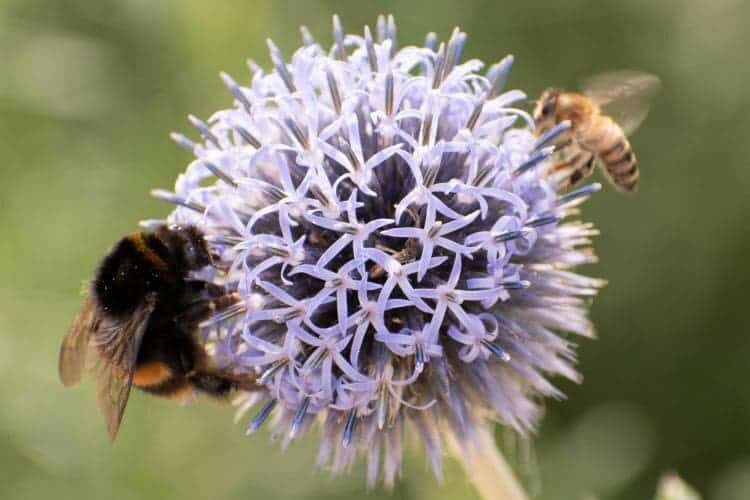It seems that bees, and not just humans, are forced to deal with a pandemic of their own. A new study has found that a fungal pathogen known as Nosema has been infecting bees around the world for the past two decades. The infection has been documented across Europe, Canada, and even in Kenya.

The pathogen has almost exclusively affected the European honeybee, a well-known commercial pollinator. Nothing is known yet about the impact on native and solitary bees, which represent most of the 20,000 bee species that can be found on the planet, the researchers argued.
“More work needs to be done to understand Nosema infections in native bee species and the potential consequences to native ecosystems, if native bees suffer a similar fate as honeybees when infected,” said Arthur Grupe II, lead author and postdoctoral researcher in the Department of Ecology and Evolutionary Biology.
Native bees are important as pollinators in their local ecosystems and also contribute to the pollination of agricultural crops. One out of every three pieces of food we eat is owed to a pollinator, according to Grupe. But bee populations are being challenged by the colony collapse disorder, a combination of pests, pathogens, poor nutrition, and pesticides.
Nosema is part of those threats. It’s a fungal pathogen that survives by infecting the stomachs of the bees, where it germinates. While it passes through the digestive tract, the pathogen can infect other cells in the bee’s body, sickening the bee and contaminating flowers, pollen, and hives along the way. It can even lower the sperm count of bumblebees, reducing their reproduction ability.
The strains of Nosema known as Nosema apis, Nosema ceranae, and Nosema bombi are the most common ones to cause infections in bees. There are a few treatments available, such as plant extracts, as well as breeding methods for resistance and microbial supplements. But most research in native bee populations has been limited.
That’s why it’s important to better understand how these Nosema strains travel throughout the globe and affect native and solitary bees, which are the majority of all bee species, the researchers argue. The strains could lead to more bee pandemics and wider problems with bee colonies.
For example, some flowers can only be pollinated by a bee or insect with the right size and weight. If that specific bee goes extinct, problems could be severe. Flowers are also where solitary bees meet their mates. If those flowers die off, bees wouldn’t have a place to find their reproductive partners.
Pathogen spillover also represents a major threat to native bees. This happens when infected bees from commercial hives leave the fungus on flowers and native bees pick it up. These native bees, having never encountered this pathogen before, could be much more susceptible to its negative effects.
The same thing could happen the other way around. If a new, more aggressive strain of Nosema mutates in native bees, it could find its way back into commercial honeybee populations, which wouldn’t be able to resist that particular version of the pathogen.
“We know so little about the biology of what’s happening,” said in a statement Alisha Quandt, co-author and assistant professor of ecology and evolutionary biology. “That’s one of the reasons why we think it’s so important for people to start doing this kind of surveillance work, going out there and sampling more native bees.”
The study was published in the journal PLOS.


